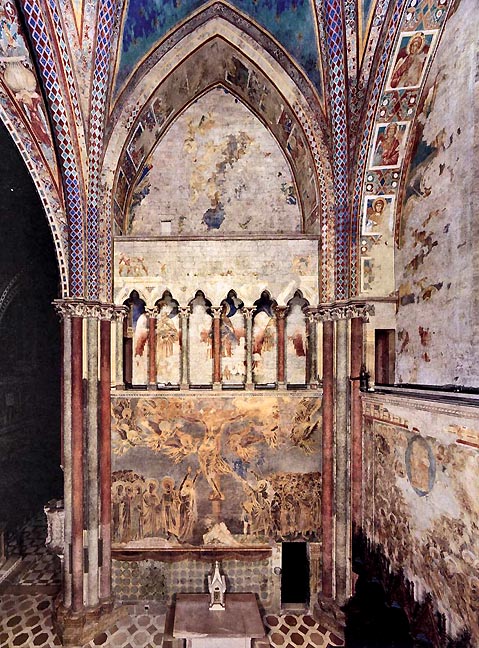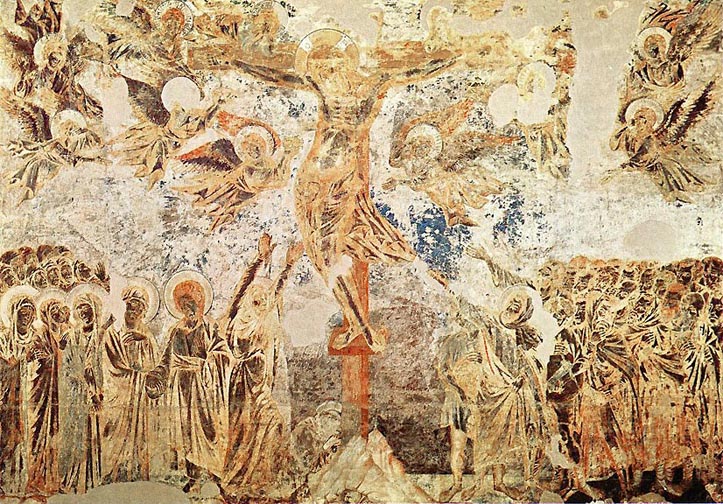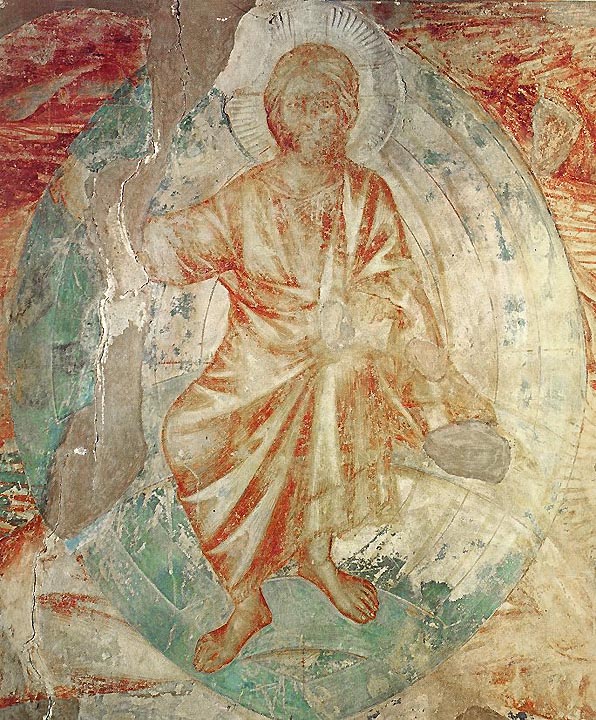-
Giovanni Cimabue 1240 – 1302
Florentine painter. His nickname means 'Ox-head'. He was a contemporary of Dante, who refers to him in The Divine Comedy (Purg. xi. 94-6) as an artist who was 'believed to hold the field in painting' only to be eclipsed by Giotto's fame. Ironically enough this passage, meant to illustrate the vanity of short-lived earthly glory, has become the basis for Cimabue's fame; for, embroidering on this reference, later writers made him into the discoverer and teacher of Giotto and regarded him as the first in the long line of great Italian painters. He was said to have worked in the 'Greek' (i.e. Byzantine) manner, but to have begun the movement towards greater realism which culminated in the Renaissance.Web Gallery of Art
Cimabue's frecoes in the Upper Church of San Francesco in Assisi (1283).

Cimabue's frecoes in the left transept of the Upper Church of San Francesco in Assisi (1283).

The Crucifixion

The Apocalyptic Christ